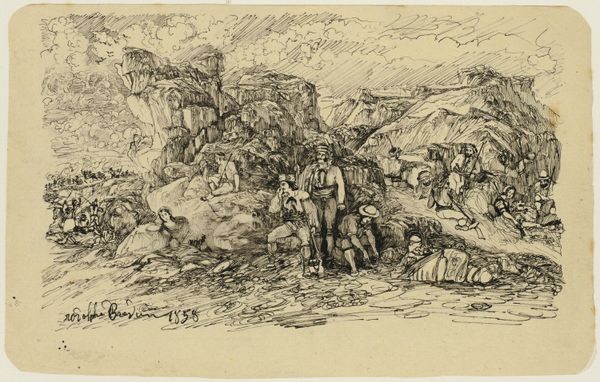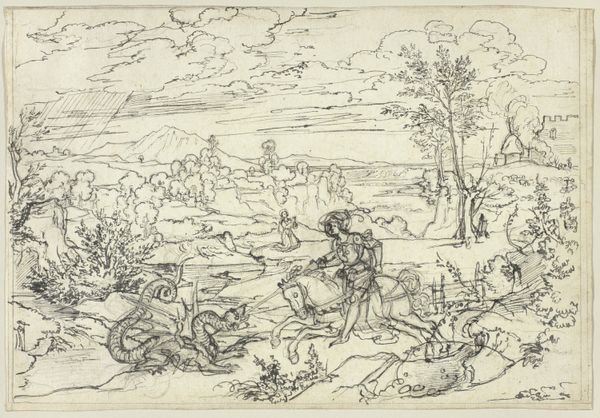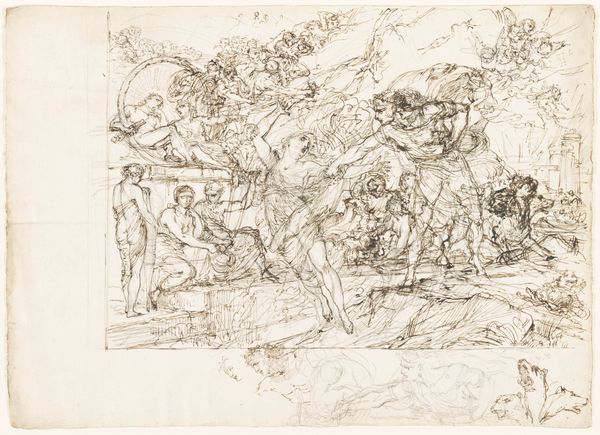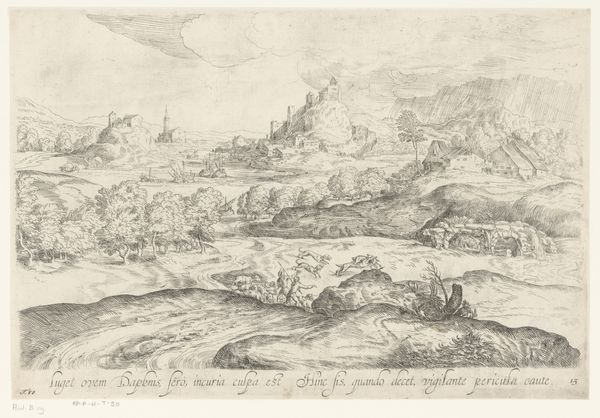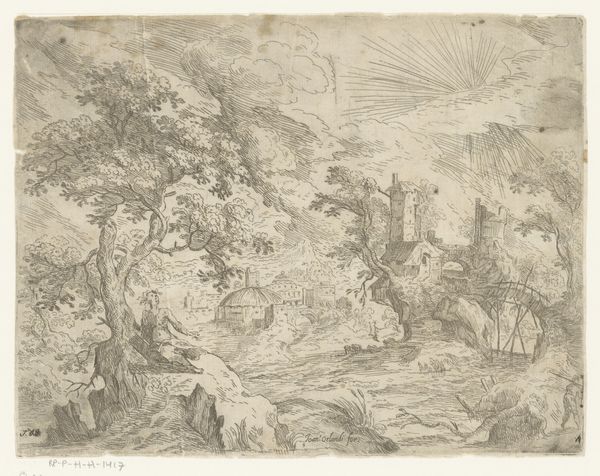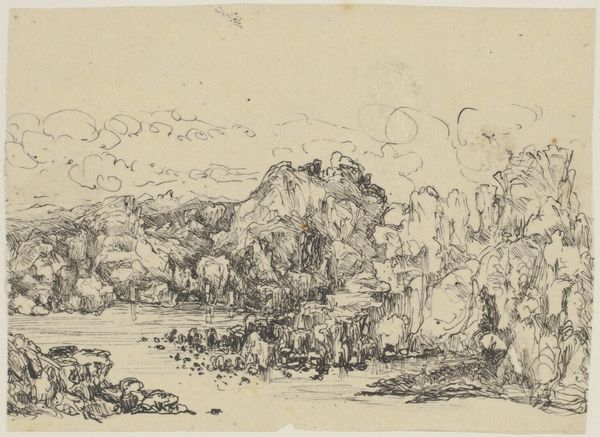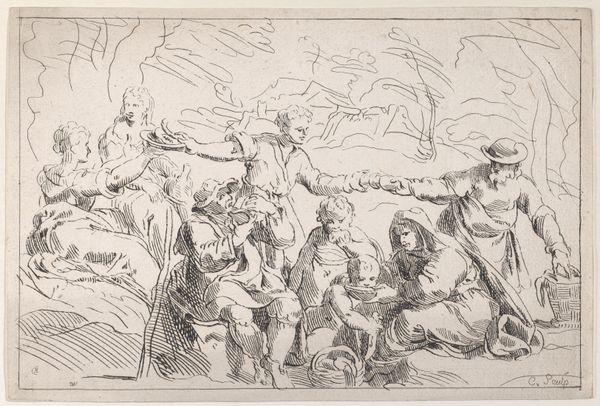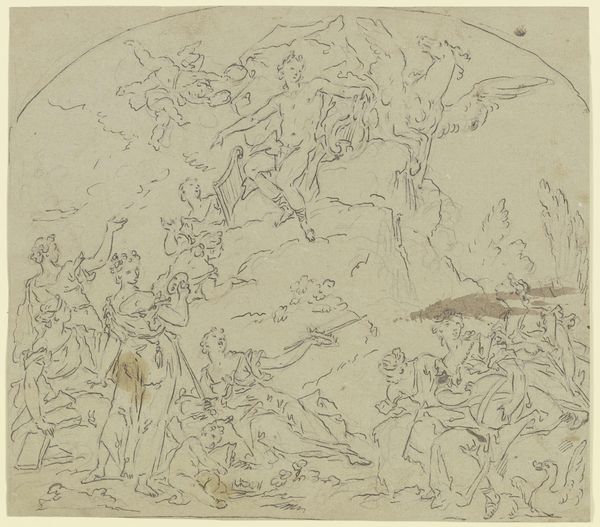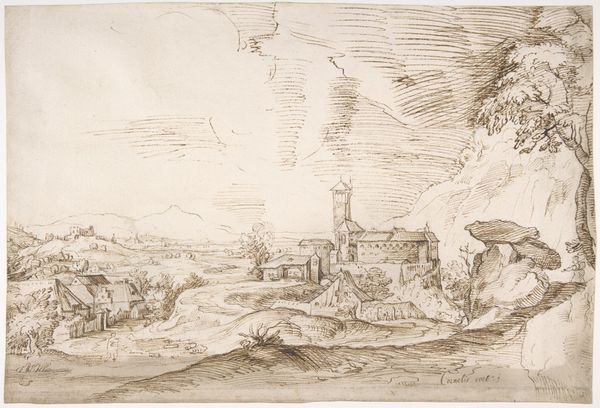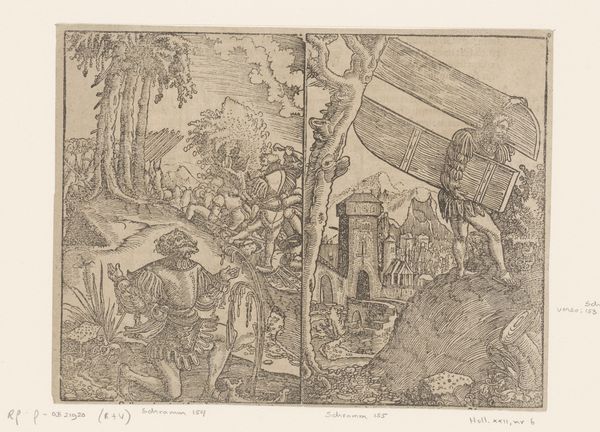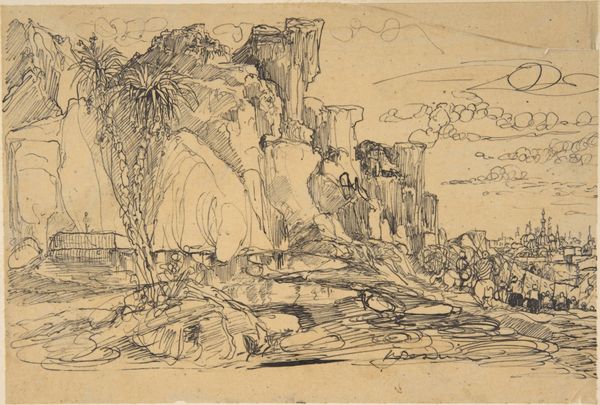
drawing, ink
#
drawing
#
landscape
#
11_renaissance
#
ink
#
line
#
northern-renaissance
Dimensions: height 133 mm, width 199 mm
Copyright: Rijks Museum: Open Domain
Curator: The scene unfurls as if through a veil; delicate lines constructing rocky precipices and figures almost swallowed by the land itself. Editor: There’s a raw energy to it, despite the aged ink. It feels almost…claustrophobic. Too much crammed onto the page, an overabundance of strokes battling for space. Curator: We're observing “Landscape with Rocks, Figures and a Sail Ship,” an ink drawing, most likely with pen, from Jan van Scorel, likely made sometime between 1505 and 1562. What do you think contributes to that feeling? Is it the density of the linework? Editor: Definitely. It's fascinating how van Scorel used such a limited medium to create textures. The varying thicknesses and angles of the lines produce distinct visual effects, from the rough hewn rock faces to the distant light. Curator: Indeed, the strategic use of line builds the narrative of the space, suggesting the rugged and untamed landscape but it also seems to hint at something beyond the pictorial surface. Look closely; do we see the celebration of land as a force for production and commerce? A testament to human interaction and stewardship of the land itself? Or is this work more an exercise in a sort of Northern Renaissance sublime, emphasizing nature's dominance, in ways mirroring writings from Erasmus and others? Editor: I think both interpretations hold weight, really. Consider the materials, this isn’t some grand oil painting meant for wealthy patrons. The drawing suggests accessibility, reproducibility, even a sort of instructional character. And what are these tiny figures doing down by the beach? What is their labor? What cargo fills that little boat and to what end? These questions underscore the artist’s world. Curator: Questions that place the artwork in dialog with larger narratives around economics, labor, identity formation within this period. A pertinent lens to viewing such work as an activist. Editor: For me, the beauty resides in the sheer act of transcription, of transforming observation into this vibrant image using readily available, albeit carefully manipulated materials. Thank you for providing the insight to engage these elements in deeper discussion, this definitely made for an enlightening look at the relationship between materials and societal reflection! Curator: Likewise. And thank you, by highlighting the tangible, you ground my activism and center lived experiences that should shape art history and visual literacy.
Comments
No comments
Be the first to comment and join the conversation on the ultimate creative platform.
